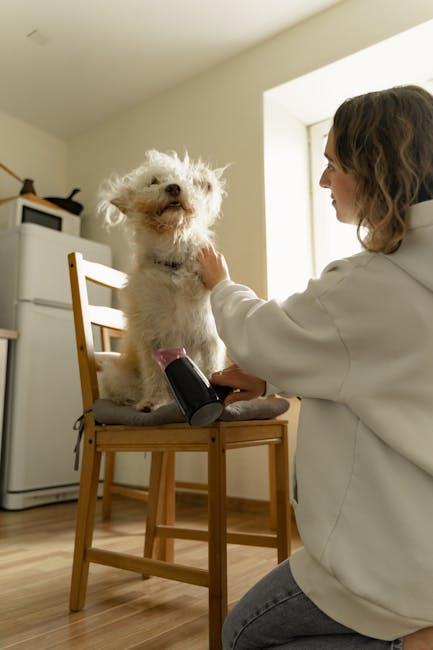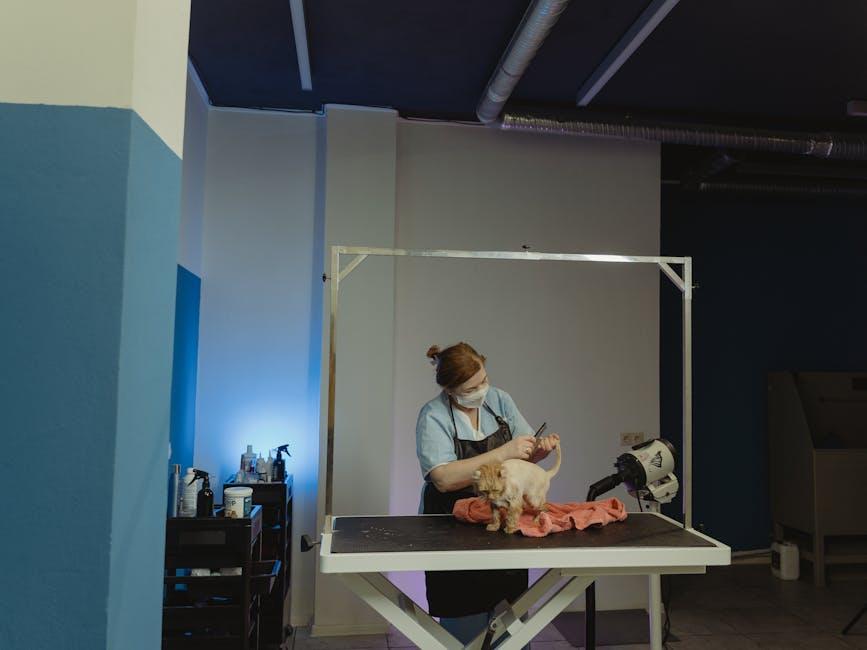Welcoming a furry friend into your home is a journey filled with joy, companionship, and a few challenges along the way. One of the essential skills for both you and your dog is learning to navigate handling and grooming with ease. Whether it’s clipping nails, brushing fur, or simply getting comfortable with being touched, these experiences are pivotal in ensuring your pet’s well-being and fostering a trusting relationship. In this guide, we’ll walk you through the gentle art of training your dog to embrace handling and grooming. With patience, understanding, and a few simple techniques, you’ll transform these routines into bonding moments that both you and your pup can look forward to. Let’s embark on this journey to make grooming a positive and stress-free experience for your beloved companion.
Building Trust and Comfort Through Positive Reinforcement
Establishing a foundation of trust and comfort with your dog is essential for successful grooming and handling. One effective way to achieve this is through positive reinforcement, which encourages desired behaviors by rewarding them. Start by identifying what your dog loves—be it treats, praise, or playtime—and use these as rewards to build a positive association with grooming activities.
- Introduce grooming tools gradually: Allow your dog to sniff and explore brushes, clippers, and other tools in a relaxed environment.
- Pair grooming with treats: Offer a small treat each time you introduce a new tool or grooming step, reinforcing calm behavior.
- Break grooming into short sessions: Initially, keep grooming sessions brief and gradually increase the duration as your dog becomes more comfortable.
- Celebrate small victories: Reward your dog for staying calm and cooperative, even if it’s just for a few seconds.
By focusing on positive reinforcement, you create a safe space where your dog feels secure and valued. Over time, this approach will help your dog associate grooming and handling with pleasant experiences, making it an enjoyable routine for both of you.

Mastering Gentle Touch Techniques for a Stress-Free Experience
Creating a stress-free environment for your furry friend begins with mastering the art of gentle touch. It’s all about patience and understanding. Start by identifying the areas your dog is most comfortable with. Use soft, slow strokes to build trust, and gradually introduce touch to more sensitive areas like paws or ears. Remember, consistency is key. Regular, calm interactions can help your dog feel safe and secure during grooming sessions.
- Start Slowly: Begin with short, gentle sessions and gradually increase the duration as your dog becomes more comfortable.
- Use Positive Reinforcement: Reward your dog with treats or praise when they respond well to handling.
- Watch for Cues: Pay attention to your dog’s body language. If they seem stressed, take a break and try again later.
Integrating these gentle touch techniques into your routine not only makes grooming a more enjoyable experience but also strengthens the bond between you and your pet. With patience and love, your dog will come to associate handling with comfort and safety.

Creating a Consistent Routine to Foster Familiarity
Establishing a daily schedule can greatly enhance your dog’s comfort with handling and grooming. By integrating these activities into your routine, you create a predictable environment where your dog knows what to expect. This familiarity reduces anxiety and builds trust. Start by setting aside specific times each day for short handling sessions, gradually introducing grooming tools and techniques. Consistency is key, so try to maintain the same order of activities, such as:
- Gentle petting to relax your dog
- Checking ears and teeth for a quick health check
- Brushing fur with a soft brush
- Handling paws to prepare for nail trimming
Pair these activities with positive reinforcement, like treats or praise, to make the experience enjoyable for your furry friend. By incorporating these practices into your daily routine, you create a comforting rhythm that helps your dog feel secure and more willing to accept handling and grooming over time.

Choosing the Right Tools for Your Dog’s Unique Needs
Every dog is a unique individual, and understanding your furry friend’s specific needs is key to choosing the right tools for handling and grooming. Start by considering your dog’s breed, size, and coat type. For example, a long-haired breed like a Golden Retriever will benefit from a high-quality slicker brush, while a short-haired dog like a Beagle may only need a simple bristle brush. Nail clippers or grinders should be selected based on the thickness and hardness of your dog’s nails. Always ensure that the tools are comfortable for both you and your pet, with ergonomic handles and gentle, effective mechanisms.
- Brushes and Combs: Tailor your choice to your dog’s coat length and texture.
- Nail Care Tools: Choose clippers or grinders that match your dog’s nail type.
- Shampoos and Conditioners: Opt for hypoallergenic or breed-specific products.
- Ear and Eye Care Products: Ensure they are safe and suitable for your dog’s sensitivities.
Investing in the right tools not only makes the grooming process smoother but also helps your dog feel more at ease. Look for high-quality, durable products that suit your dog’s specific needs. Always prioritize their comfort and safety, and don’t hesitate to consult with a professional groomer or veterinarian if you’re unsure about the best choices for your pet.

